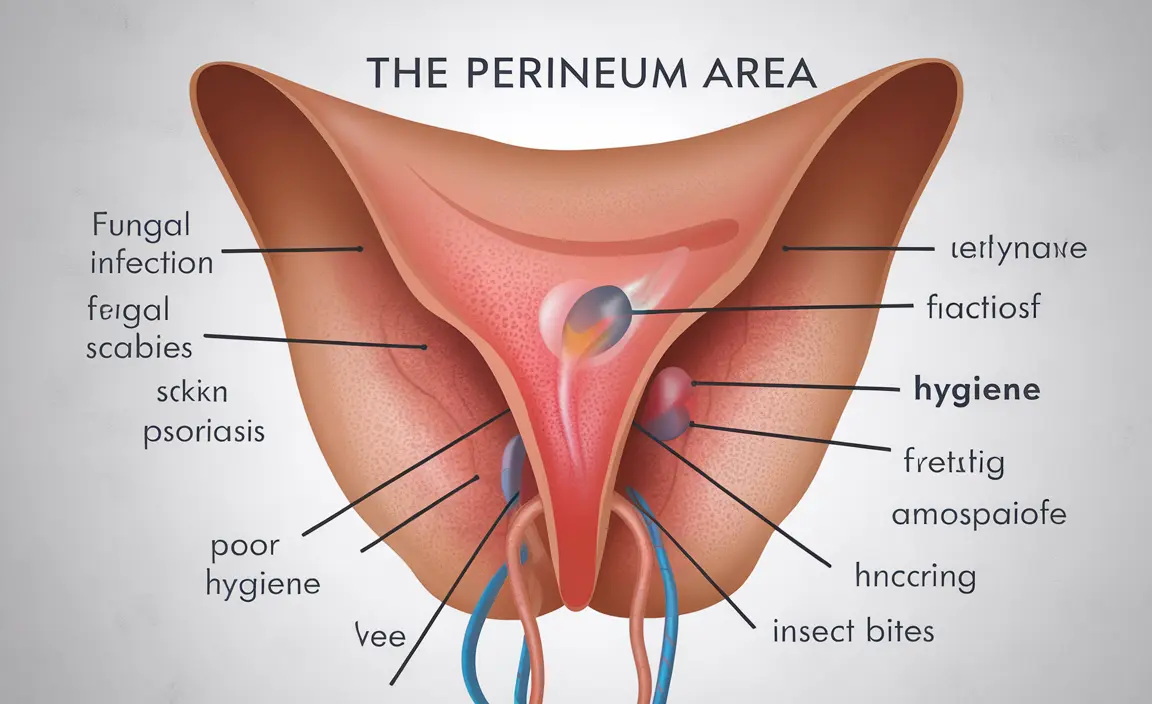The perineum, the area between the genitals and anus, can experience uncomfortable itching that significantly impacts daily comfort and quality of life. While this condition is common, understanding its various causes and treatment options is crucial for finding effective relief and preventing recurrence.
This comprehensive guide explores the multiple factors that can lead to an itchy perineum, available treatment options, and practical prevention strategies to help you manage this sensitive health concern.
Common Causes of Perineal Itching
Perineal itching can stem from various conditions and factors, ranging from simple irritants to more complex medical issues:
Skin Conditions
Several dermatological conditions can trigger perineal itching:
- Contact dermatitis
- Eczema
- Psoriasis
- Fungal infections
- Bacterial infections
Hygiene-Related Factors
Poor hygiene or overwashing can both contribute to perineal discomfort:
- Insufficient cleaning
- Excessive cleaning with harsh soaps
- Inadequate drying after bathing
- Use of irritating personal care products
Medical Conditions
Underlying health issues that may cause perineal itching include:
- Diabetes
- Sexually transmitted infections
- Hemorrhoids
- Pinworms
- Nerve disorders
Diagnosis and Medical Assessment
A healthcare provider will typically perform a thorough examination and may recommend specific tests to determine the underlying cause of perineal itching. This may include:
- Physical examination
- Skin scraping tests
- Blood tests for underlying conditions
- Nerve conduction studies if nerve damage is suspected
Treatment Options
Over-the-Counter Solutions
Many cases of perineal itching can be managed with readily available treatments:
- Anti-fungal creams
- Hydrocortisone cream
- Zinc oxide preparations
- Antihistamine medications
- Soothing moisturizers
Prescription Treatments
For more severe cases, medical professionals may prescribe:
- Stronger topical steroids
- Oral antifungal medications
- Antibiotics for bacterial infections
- Specialized medications for specific conditions
Prevention and Lifestyle Changes
Implementing certain lifestyle modifications can help prevent or reduce perineal itching:
Hygiene Practices
- Use gentle, unscented cleansers
- Pat the area dry thoroughly
- Wear breathable cotton underwear
- Change out of wet or sweaty clothes promptly
Dietary Considerations
Some dietary adjustments may help reduce symptoms:
- Limit spicy foods
- Reduce caffeine intake
- Maintain proper hydration
- Consider food allergy testing if suggested by a healthcare provider
Frequently Asked Questions
What are the typical causes of an itchy perineum and how can they be diagnosed?
Common causes include skin conditions, infections, hygiene issues, and underlying medical conditions. Diagnosis typically involves a physical examination by a healthcare provider, who may recommend specific tests such as skin scrapings, blood work, or other diagnostic procedures based on symptoms.
How can I treat itchy perineum symptoms at home using over-the-counter remedies?
Over-the-counter treatments include anti-fungal creams, hydrocortisone preparations, and soothing moisturizers. Using gentle, unscented cleansers and keeping the area clean and dry can also help manage symptoms. However, if symptoms persist, consult a healthcare provider.
What lifestyle changes can help prevent or reduce itching in the perineum?
Key lifestyle changes include maintaining proper hygiene without overwashing, wearing breathable cotton underwear, avoiding irritating products, promptly changing out of wet clothes, and following a balanced diet that excludes potential trigger foods.
Can nerve damage cause itching in the perineum, and if so, how is it treated?
Yes, nerve damage can cause perineal itching through a condition called neuropathic itch. Treatment typically involves addressing the underlying nerve condition and may include specialized medications, topical treatments, and physical therapy as prescribed by a healthcare provider.
What are the differences between pruritus ani and other conditions that cause genital itching?
Pruritus ani specifically affects the anal area, while other forms of genital itching may involve different regions of the perineum. The main difference lies in the location and potential causes, with pruritus ani often related to hygiene issues or hemorrhoids, while other forms of genital itching might be caused by infections or skin conditions.




